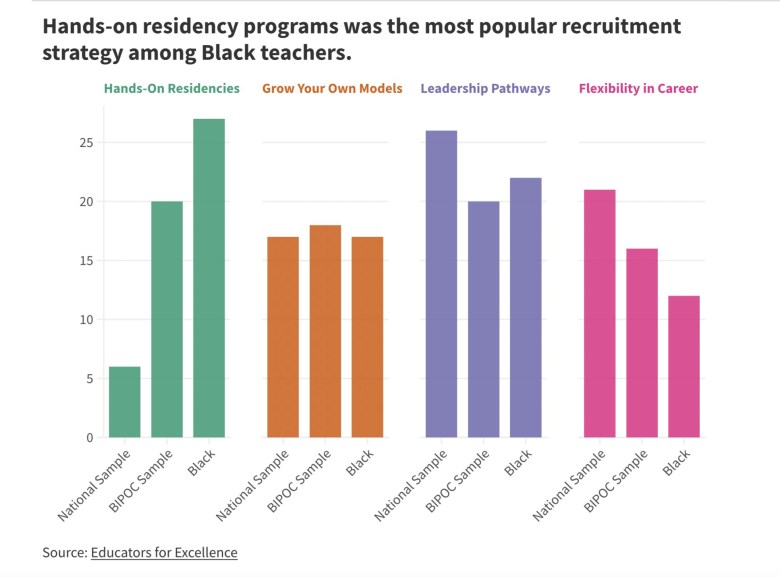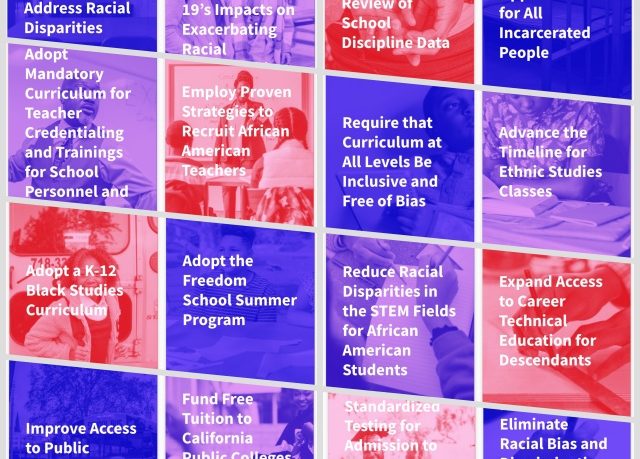By Maya Pottiger,
Word in Black
We are in an era where the discourse on reparations travels along a number of crucial pathways.
It meanders through the history of housing discrimination and inequities in home loan approvals. It acknowledges the haunting reality of police brutality and violence towards Black bodies.
“Those are clearly grounds and categories for reparations,” says Dr. Bettina Love, the William F. Russell Professor at Teachers College, Columbia University. “But we often don’t think about education as a lever for reparations.”
Experts say the injustice doled out to generations of Black people in the nation’s K-12 schools needs to be atoned for — and they’re taking their cues from California. (Photograph courtesy of Feliphe Schiarolli/Unsplash)
We may not think about education because it’s something that’s seemingly regulated by reforms, policies, a Department of Education, and all levels of government officials — from superintendents to mayors. But when you think about the inequalities in education, “they are just as harmful, as impactful as any of these other levers,” Love says.
For Black students, the K-12 school years are often marked by a conspicuous absence of Black teachers or equitable resources, all while attending schools that are crying out for repairs. These are not missed opportunities, Love emphasizes, but harm — ones that parallel police brutality and housing discrimination.
“What I always say is that before a person is denied a home loan, before a person is denied a bank loan, or before a Black business is devalued,” Love says, “they’re educated in American public schools first.”
California’s plan to address separate and unequal education
In early May 2023, the California Reparations Task Force presented a comprehensive 500-page document outlining ways the state could apologize and make amends for racism and slavery.
A dedicated chapter proposes 16 policies that address separate and unequal education.
And the base of “reparations” is the word “repair,” says Natalie Wheatfall-Lum, the director of PK-12 policy at The Education Trust—West. She says the state needs to “confront and reconcile” that it has and continues to benefit from policies that perpetuate systemic racism and create disparities for Black students.
“As a whole, the task force is certainly on the right track,” Wheatfall-Lum says.
The policies directly target Black students, and directly target and address racial disparities in a number of areas that would meaningfully address equity gaps.
Wheatfall-Lum highlighted four policies that would be particularly impactful in practice.
The first policy is increasing funding to schools to address racial disparities, which would be done through California’s Local Control Funding Formula. This would give school districts additional funding according to racial background for students performing academically under the state standardized test average. Currently in California, the lowest performing groups are Black and Native American students.
“That would be a significant change to the way we think about awaited funding or equitable funding,” Wheatfall-Lum says. “It would mean that districts will be signaled to have a very targeted focus on those student groups in the ways that they are providing educational services.”

Another highlighted policy is reducing racial disparities in STEM fields for African American students. This involves making math curriculum more accessible and inclusive for students of color because it’s often a “significant gatekeeper” to further study in STEM, Wheatfall-Lum says. Instructional methods and curricula need to “speak to the unique experiences of Black students in order to engage them in math,” Wheatfall-Lum says.
Wheatfall-Lum also cited advancing the timeline for ethnic studies curricula. The California Healthy Kids Survey shows that feelings of belonging are much lower for Black students than other student groups, and research has shown that ethnic studies has a positive impact on Black students.
“It helps them to engage with students because they see themselves reflected in what they’re learning day-to-day,” Wheatfall-Lum says.
And, along with that, there’s the policy about recruiting Black teachers. In her research, Wheatfall-Lum has heard from Black teachers that their working environments are not culturally inclusive or supportive, and there are other structural issues, like an inability to earn a living wage.
“There is a lot of work yet to be done to ensure that we are retaining Black teachers, recruiting Black teachers, and providing the support that they need to be successful in the profession,” Wheatfall-Lum says. “And provide a quality of life that will attract folks to the profession.”
Taking these solutions nationwide
In the nearly 20 education reparations proposals California made, it’s difficult to tell which are likely to have national pickup.
However, Love says one that “has to be critical” is the recruitment of Black teachers.
There are proven benefits — for all students — when a Black educator is standing at the front of the classroom: higher graduation rates, fewer disruption issues, and fewer disciplinary actions.
Specifically for Black students, having one Black teacher by third grade means they are 7 percent more likely to graduate high school and 13 percent more likely to enroll in college, according to a 2021 National Bureau of Economic Research report. And having two Black teachers increases a Black student’s likelihood of enrolling in college by 32 percent.
In terms of the best recruitment strategies, Black teachers highlighted hands-on residency programs and clear leadership pathways as the top two strategies in a 2022 Educators for Excellence poll.
This story is part of Word In Black’s “Reparations Now” series exploring the fight for our modern-day 40 acres and a mule, and why Black Americans deserve justice. This article was originally published by Word in Black.



